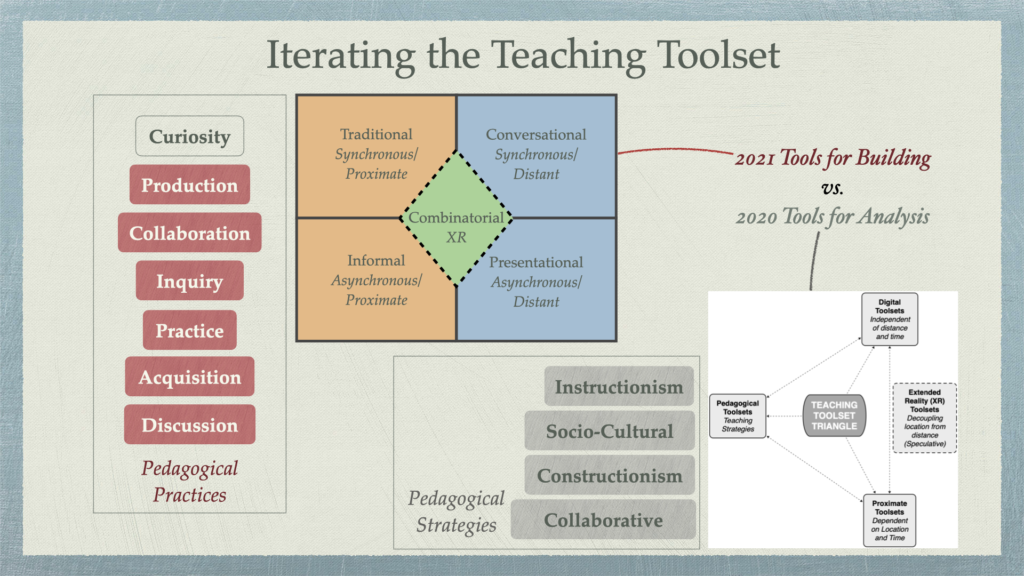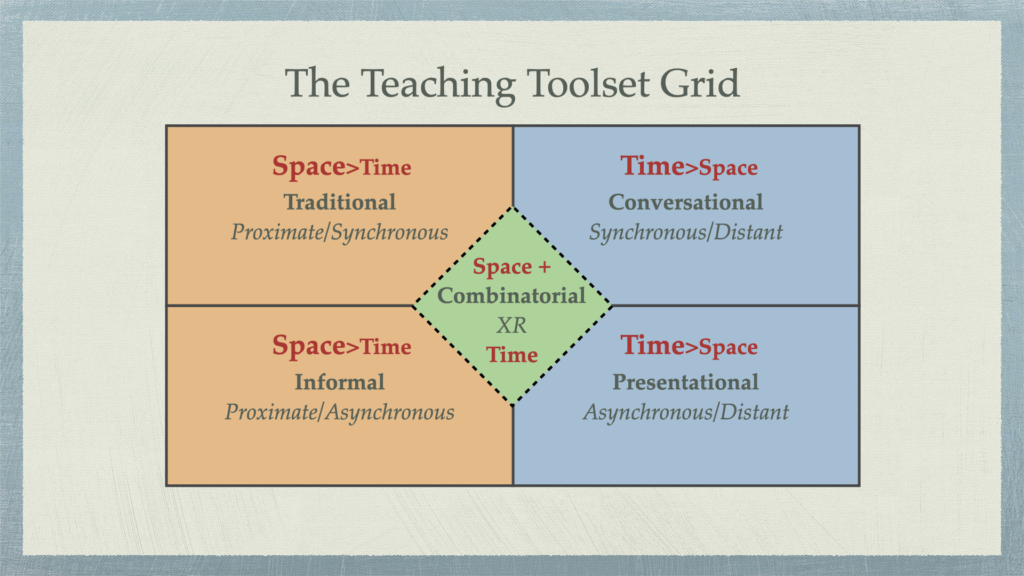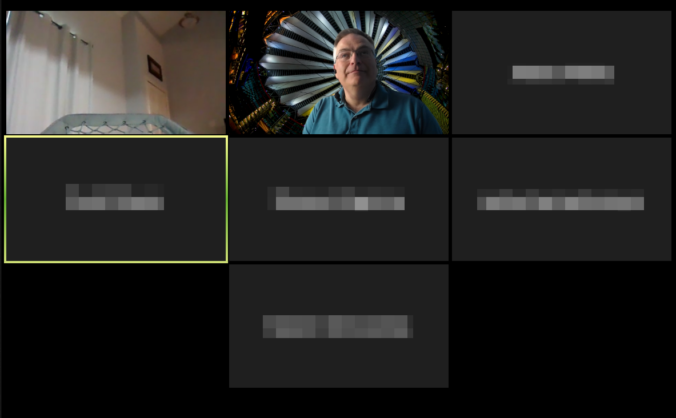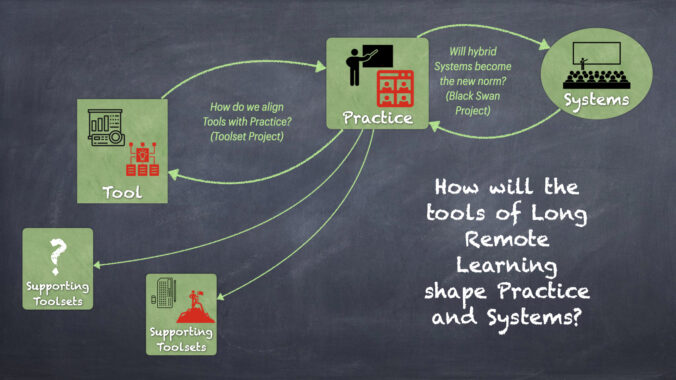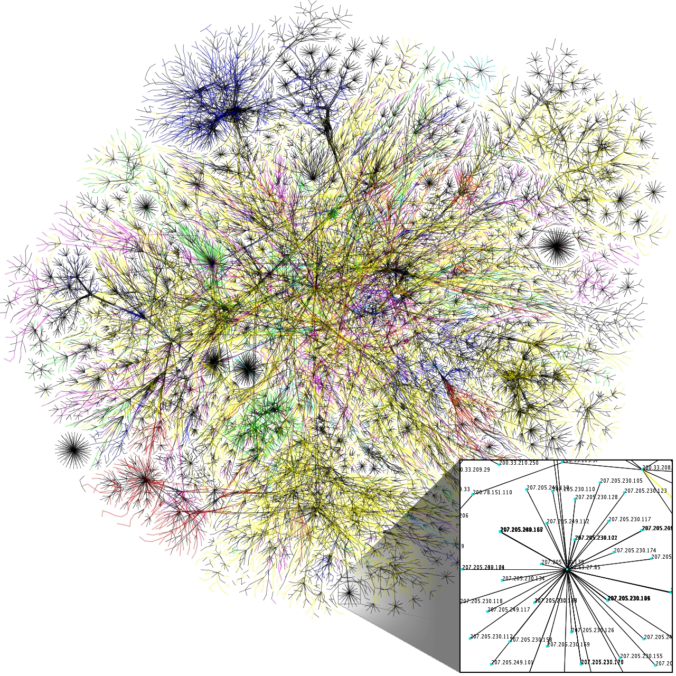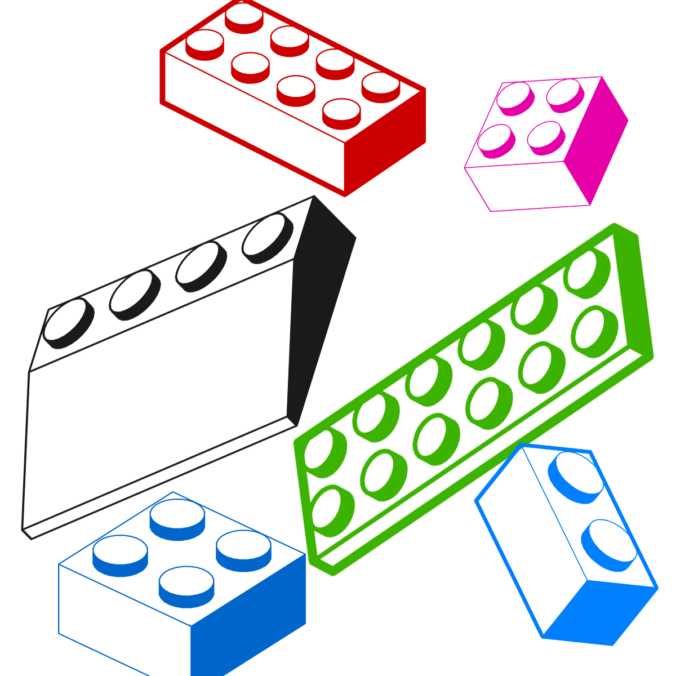Originally Published on May 11, 2021 at: https://shapingedu.asu.edu/blog/humans-are-more-complex-light-iterating-tool-understanding-tools
The Teaching Toolset Project will reframe how we view the tools we use as teachers. As I argue in my forthcoming book, Discovering Digital Humanity, all too often we become prisoners of our tools instead of their masters. We create technological monstrosities with the idea that somehow this will make our students learn better. There is no question that digital tools open up vast new possibilities for learning but they also hold within them traps for the unwary. These traps can be avoided if we know where we are going and use the ends of teaching to drive the means of our tools.
The Teaching Toolset has always been about chasing the elusive will-o-wisp that forms the connection between what we are trying to do and the tools we use to do it. As I argued a few weeks ago, most of us have gradually lost connection with our tools over the last two centuries. Pre-industrial teaching consisted largely of small groups of students working directly with the teacher. The industrial age gradually disconnected students from teachers, particularly at the higher levels of education and the tools it made available gradually weakened that student-teacher connection.
Digital tools have theoretically made it possible to reverse the trend toward the isolated student. Tools that used to be extremely complex for both teacher and student to operate are becoming much simpler to access. This opens up many new possibilities to reconnect with students in ways that were impossible even a couple of decades ago. Diversity carries with it its own complexity, however, and now our challenge is understanding and applying the opportunities our new tools give us.
Simplifying this relationship has been an overriding goal of my career as a technologist, going back at least to my days trying to explain photography as a camera salesman in the 80s. The technology of photography is easy. It is a simple set of mental calculations combining shutter speed, aperture, and film/sensor sensitivity. Everything else flows from an understanding of these three elements. The art of seeing is where the challenge lies. I always perceived my job to be pushing technology to the side as much as possible to allow my customers to “see” and create art. This is what I’m trying to achieve with the Teaching Toolset: pushing technology to the background so that teachers and students can see knowledge and create the basis for deep learning.
Unfortunately, teaching is not as easily distilled down a small set of variables as photography. Humans are more complex than light. The kinds of tools necessary for understanding our relationships with teaching and learning are commensurately more complex. It is the construction of these tools that have obsessed me at least since I wrote the “Three-E Strategy for Technology Adoption” well over a decade ago. As my understanding of teaching has deepened since then, I have come to realize that individual tools, while helpful, need to be integrated into wider systems of tools to become “essential.” However, tools and the goals of these systems need to be carefully aligned or they will have unintended consequences.
My initial take on the Teaching Toolset was an attempt to understand how certain tools drove us toward certain pedagogical paradigms. For instance, having tools in a room concentrated in the hands of the teacher tends to lead to instructor-dominated pedagogy. The trick was figuring out which tools led in this direction and to be conscious of how they were impacting our teaching. The opportunity was also there to select tools mindfully that would lead to richer styles of teaching. The Teaching Toolset Triangle from 2020 attempted to connect sets of tools to particular strategies in teaching as defined by Diana Laurillard in her 2009 article on the subject. It was designed as a tool for analysis and self-analysis. This project was an important exercise in self-reflection and there is still work to be done there.
However, the pandemic taught me that we still have a long way to go in understanding the complexities of these relationships . It became apparent to me that we need a more immediately practical tool for understanding the relationship between technology and teaching. During the pandemic many of us were forced to strip away all of our preconceptions about how tools were used in instruction. These efforts often led to a much more nuanced perception of how and why we use tools to communicate with our students.
One thing that was already causing me to question the original structure even before remote teaching was where XR fit into the picture. It didn’t really fit in either the physical or virtual categories as it had characteristics of both. Add to that we now have a whole new appreciation of a wide range of video conferencing platforms and the profound implications they can have for the kinds of conversations that can take place within them. The older model also wasn’t designed to account for how tools could be combined to complement themselves into a greater whole.
The model’s triangular structure masked an inherent tension between two concepts I had carefully separated in my foundational framework, Ideaspaces, because it papered over the tension between Space and Time. Proximate and Virtual contained both synchronous and asynchronous sets of tools. In my system tools create Spaces where humans can interact. However, tools are also a fundamental component in how Time works. Badly designed spaces can distract from tasks and eat productive time.
A more complex structure is needed to underpin the model in order to better capture the richness of the opportunities our tools create for teaching and learning. The trick is balancing this out so that the tool for understanding doesn’t itself become difficult to understand. This structure must provide different boxes that capture the nature of tools as Spaces but also provide the context of their relationship to Time. Finally, this structure should also help us understand how the emerging technologies of XR creates opportunities in all four quadrants of categorization.
The solution I am in the process of developing, and which guides the creation of a new ShapingEDU product, is to create a 4+1 visualization that I have tentatively dubbed the Teaching Toolset Quintangle. Since Quintangle is a mouthful, I’ve decided to shorten this to the Teaching Toolset.
The goal of this new model is to create a better bridge between the tools we select as teachers and understanding the opportunities that they open up to better reach our students. Instead of the more abstract teaching styles of the earlier system, we will look at 6 specific teaching goals that Laurillard identifies in her 2012 book, Teaching as a Design Science: Production, Collaboration, Inquiry, Discussion, Acquisition, and Practice. I will add one more to this mix, the question of motivation, which is centered on whether or not a particular tool fosters a sense of Curiosity in students.
This summer we will engage in a series of interconnected hackathons starting with tools for Building Communities of Thought (Synchronous Tools) on May 18th, followed by Building Communities of Practice (Asynchronous Tools) and Building Communities of Learning (XR Tools) in June. These connected hackathons will assemble information and strategies for understanding tools that we can share with the larger world in a publication later this year tentatively titled Building Communities of Practice: A Practical Guide to Shaping Meaning with Tools. This practical guide will connect tools’ strengths and weaknesses with one of the 6+1 teaching goals. This is intended to be an iterative publication that will be updated yearly as technology and teaching co-evolve.
Teaching in a process of iteration. Iteration was difficult during the Industrial Age because tools were complex and hard to use. The Digital Age is an age of iteration because now our tools can be iterated as fast as we iterate ourselves. Now we need a different kind of tool. We need tools to help us construct environments that can be fine-tuned around the needs of each learner and iterated itself. The central challenge here is to make the systems for understanding our tools as iterative as the tools themselves. The opportunities that we will unlock will shape the possible in teaching and learning. I hope you will join us to contribute your voice to the project.


